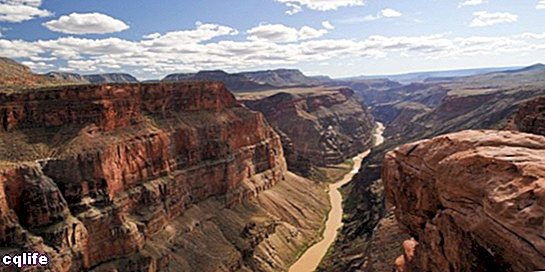- What is physical geography?
- Characteristics of physical geography
- Examples of physical geography
- Auxiliary Sciences of Physical Geography
- Physical geography and human geography
We explain what physical geography is, its history, characteristics and examples. Also, differences with human geography.

What is physical geography?
Physical geography is called the branch of geography that deals with the study of land surface, understood as a geographical space natural. This means that it is concerned with the natural aspects of geography only, without taking into account the populations human beings and their relationships with the environment.
Physical geography is interested in the geographic patterns and processes derived from energy flows in the environment, either in the geosphere, hydrosphere or atmosphere. To understand them, he methodologically isolates them from the rest of the globe, despite the fact that in the nature, as we know, the elements are interconnected.
Physical geography emerged as a discipline at the beginning of the 20th century, but its subjects of study interested humanity since ancient times. Thanks to the Theory of evolution from Charles Darwin, and the normalization of the interest of the European Imperialism of century XIX by the global description, this discipline began to exist like a body of studies in itself.
One of the great responsible for the emergence of physical geography was the American William Morris Davis (1850-1934), whose efforts allowed the formal entry of geography into academia.
Characteristics of physical geography
Physical geography is dedicated to the study of the physical components of the planet, such as the lithosphere, atmosphere, hydrosphere and biosphereas well as their relationships reciprocal, global distribution and development over time. This ranges from orography, hydrography, glaciology, oceanography, climatology and pedology, up to paleogeography and the study of natural hazards.
Examples of physical geography

Some examples of the application of physical geography are:
- The short and medium term meteorological forecasts.
- The study of the distribution of the world's natural reserves and their main threats.
- Understanding the geographical changes of the planet from geological evidence.
- The study of the distribution of certain species animals or vegetables inside a region determined, or in the world.
Auxiliary Sciences of Physical Geography
Like many others disciplines, physical geography borders other Sciences who often come to your aid or to provide you with tools that enlarge or specialize your object of study. These auxiliary sciences can be:
- Earth sciences (geosciences). They provide specialized geological knowledge to understand the nature of the earth's crust.
- Geodesy. In charge of the study of the planet in terms of its size, shape and characteristics.
- Physics. Whose knowledge of Energy, change Y movement They are useful for understanding geographic processes.
- The ecology. Necessary for the study of communities from living creatures and its geographical distribution.
- Environmental sciences. Especially when it comes to preserving the planet.
Physical geography and human geography
Unlike physical geography, human geography focuses on human populations, their relationships with the environment and social distribution, politics Y economical thereof.
Physical geography forms, together with human geography, the two great divisions of the field of study of geography, whose specific perspectives are complementary to each other.
